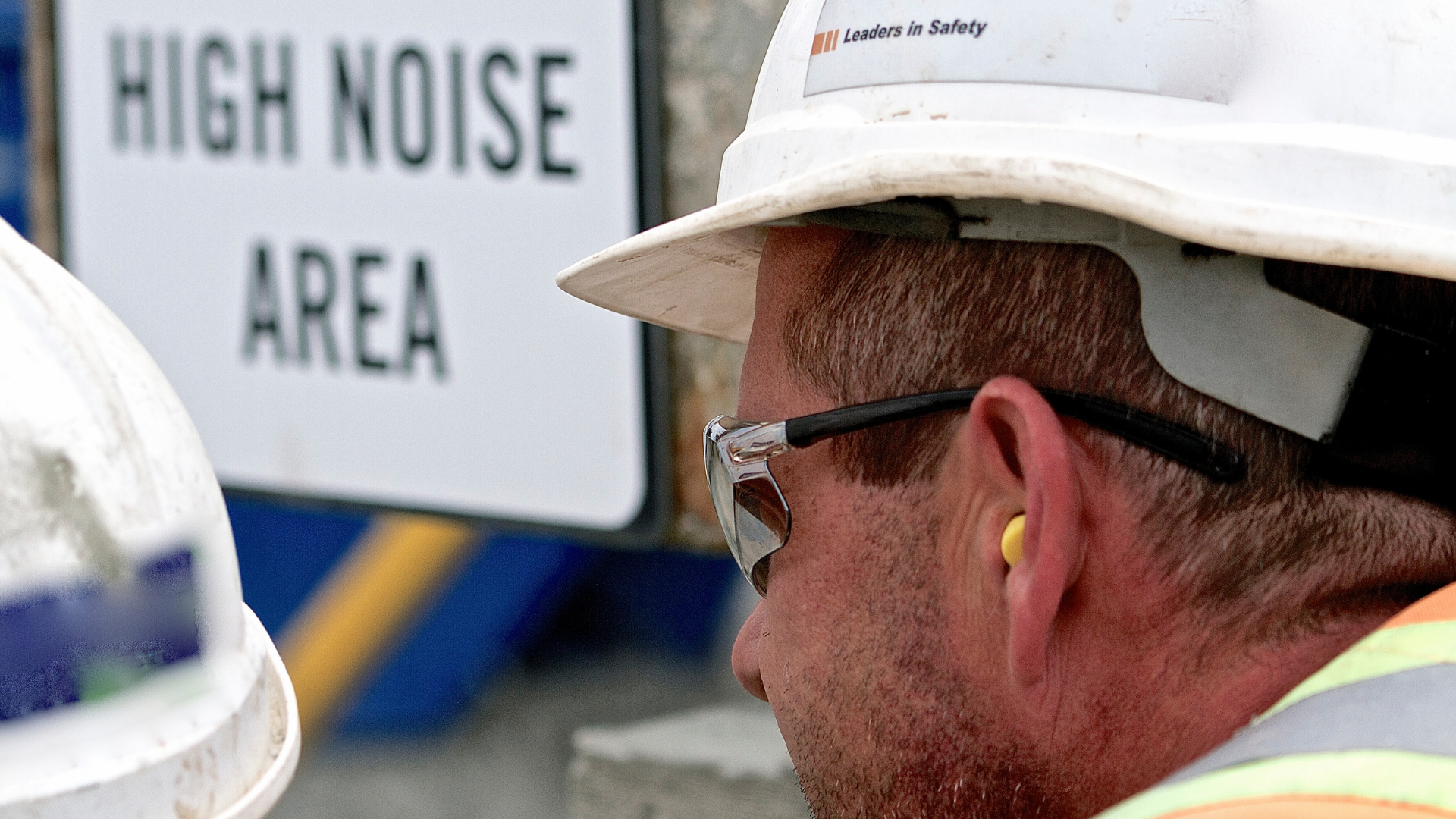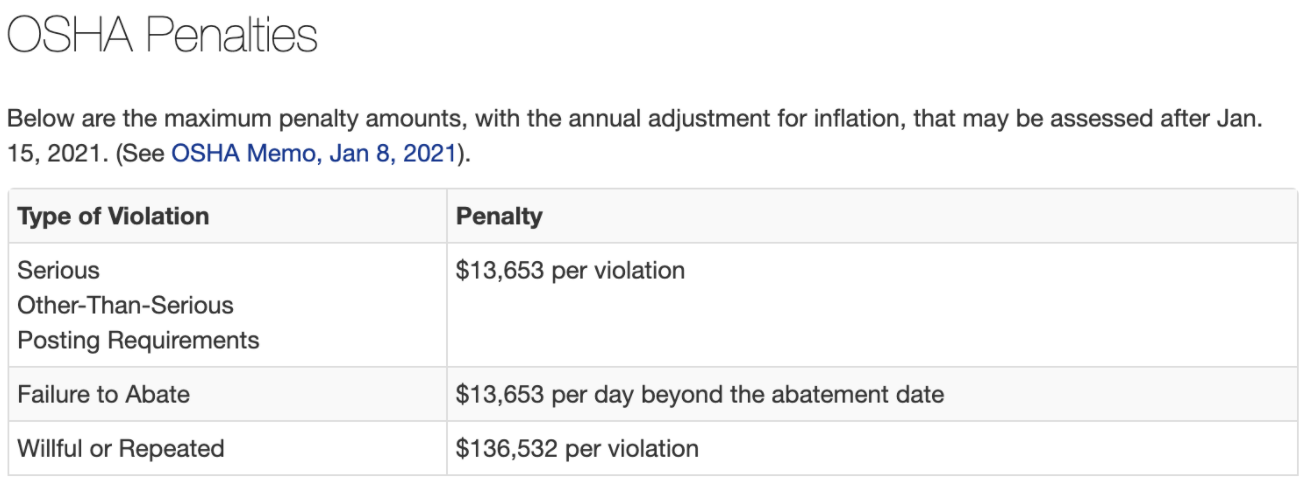Hearing Conservation Program
Guidance to Occupational Safety and Health Administration’s section 1910.95 also known as the Hearing Conservation Program

Hearing Conservation Program E-Book.
Provided by our sponsor www.soundtrace.com
"Twenty-two million workers are exposed to potentially damaging noise at work each year. Exposure to sustained loud noise kills the inner ear's nerve endings, and leads to permanent hearing loss that neither surgery nor medicine can correct," said Kris Hoffman, director of OSHA's Parsippany Area Office.
Hearing Conservation Program Overview:
Importance:
According to the Centers of Disease Control and Prevention, (CDC) Noise Induced Hearing Loss (NIHL) is the most common work-related illness in the United States. NIHL is a permanent injury as there is no current cure. Fortunately, Noise Induced Hearing Loss is 100% preventable with proactive measures and an effective Hearing Conservation Program.
Background:
The Occupational Safety and and Health Administration was signed into law December 29, 1970 and is now a large regulatory branch of the United States Department of Labor. The mission of OSHA is to “Assure safe and healthy working conditions for working men and women by setting and enforcing standards by providing training, outreach and education and assistance.”
An amendment to the United States Occupational Safety and Health Administration (OSHA), 29 CFR 1910.95, Occupational Noise Exposure requiring a Hearing Conservation Program under specified circumstances, was published in the Federal Register on January 16, 1981.
The amendment requires employers to implement a Hearing Conservation Program to protect its employees from noise hazards in the workplace that may negatively impact hearing.
Employers have the responsibility to protect their employees from the potential noise hazards. Failure to comply with OSHA’s Hearing Conservation Program requirements may result in costly penalties. Additionally, non-compliant employers are exposing their employees to hazardous noise levels, which may result in a permanent occupational hearing loss injuries.
Nearly 1 in 10 people are exposed to noise levels at work loud enough to cause hearing loss, 7 in 10 experience moderately loud noise levels, reports the Bureau of Labor Statistics. Yet, more that 50% of workers do not wear hearing protection. Combining the prevalence of hazardous noise exposure and the lack of safety protection, ultimately leads to a quarter billion dollars in workers’ compensation annually.
Current OSHA Penalty Amounts
Click Here to learn more about OSHA’s 2021 Noise Exposure Initiative.
Hearing Conservation Program Requirements:
An effective Hearing Conservation Program (HCP) goes beyond providing hearing protection for employees. An effective and compliant program must monitor sound levels (db), perform audiogram testing for employees, provide employee hearing protection, conduct annual training and retain records of employee audiograms, employee noise exposure and facility decibel levels.
Monitoring: 1910.95(d)
When information indicates that any employee's exposure may equal or exceed an 8-hour time-weighted average of 85 decibels, the employer shall develop and implement a monitoring program.
Audiometric Testing Program: 1910.95(g)(1)
The employer shall establish and maintain an audiometric testing program as provided in this paragraph by making audiometric testing available to all employees whose exposures equal or exceed an 8-hour time-weighted average of 85 decibels.
Hearing Protectors: 1910.95(i)
"Employers shall make hearing protectors available to all employees exposed to an 8-hour time-weighted average of 85 decibels or greater at no cost to the employees. Hearing protectors shall be replaced as necessary.
Training Program: 1910.95(k)
The employer shall train each employee who is exposed to noise at or above an 8-hour time weighted average of 85 decibels in accordance with the requirements of this section. The employer shall institute a training program and ensure employee participation in the program
Recordkeeping 1910.95(m)
The employer shall maintain an accurate record of all employee exposure measurements. The employer shall retain employee audiometric test records.
Need help on implementing a compliant Hearing Conservation Program? Click the button below for a FREE E-Book provided by sponsor Soundtrace.
“Failing to protect employees from excessive noise can lead to long-term and irreversible hearing loss. Employers are required to take appropriate precautions to keep employees safe from well-known hazards.”
— OSHA Cleveland Area Office Director Howard Eberts
“Earning a living should not come at the expense of hearing loss.”
- OSHA Acting Regional Administrator William Donovan in Chicago.
“Employers are liable for monitoring noise exposure and providing hearing protection. OSHA is committed to protecting workers, especially when employers fail to do so.”
- Bill Wilkerson, OSHA’s area director in Cincinnati.
"This company knowingly failed to implement necessary safety and health programs to protect employees from coming into contact with moving parts of machinery and prevent hearing loss."
- John Hermanson, OSHA's regional administrator in Dallas.
“Employers have the responsibility to protect the long-term health of its workers by ensuring they are enrolled in a hearing conservation program and conducting follow-up evaluations,"
- Frank Winingham, OSHA's area director in Appleton.
Questions?
Contact us by filling out the form.

